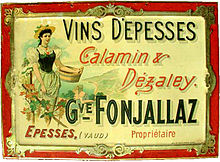
Ice wine is a type of dessert wine produced from grapes that have been frozen while still on the vine. The sugars and other dissolved solids do not freeze, but the water does, allowing for a more concentrated grape juice to develop. The grapes' must is then pressed from the frozen grapes, resulting in a smaller amount of more concentrated, very sweet juice. With ice wines, the freezing happens before the fermentation, not afterwards. Unlike the grapes from which other dessert wines are made, such as Sauternes, Tokaji, or Trockenbeerenauslese, ice wine grapes should not be affected by Botrytis cinerea or noble rot, at least not to any great degree. Only healthy grapes keep in good shape until the opportunity arises for an ice wine harvest, which in extreme cases can occur after the New Year, on a northern hemisphere calendar. This gives ice wine its characteristic refreshing sweetness balanced by high acidity. When the grapes are free of Botrytis, they are said to come in "clean". This results in a very complex and sweet wine. Much ice wine is made from the grapes Riesling, Vidal, Cabernet Franc and Cabernet Sauvignon, but there is also ice wine made from Shiraz, Merlot, Sangiovese and others.

Grüner VeltlinerGerman:[ˈɡʁyːnɐfɛltˈliːnɐ] ) is a white wine grape variety grown primarily in Austria, Hungary, Slovakia, and the Czech Republic. The leaves of the grape vine are five-lobed with bunches that are long but compact, and deep green grapes that ripen in mid-late October in the Northern Hemisphere.

A winery is a building or property that produces wine, or a business involved in the production of wine, such as a wine company. Some wine companies own many wineries. Besides wine making equipment, larger wineries may also feature warehouses, bottling lines, laboratories, and large expanses of tanks known as tank farms. Wineries may have existed as long as 8,000 years ago.

Robert Gerald Mondavi was an American winemaker. His technical and marketing strategies brought worldwide recognition for the wines of the Napa Valley in California. From an early period, Mondavi promoted labeling wines varietally rather than generically, which became the standard for New World wines. The Robert Mondavi Institute (RMI) for Wine and Food Science at the University of California, Davis opened in October 2008 in his honor.
E & J Gallo Winery is a winery and distributor headquartered in Modesto, California. It was founded in 1933 by Ernest Gallo and Julio Gallo of the Gallo family, and is the largest exporter of California wines. It is the largest wine producer in the world, producing over 3% of the world's entire annual supply of 35 billion bottles with an annual revenue of $5.3 billion it is also the largest family-owned winery in the United States.

Canadian wine is wine produced in Canada. Ontario and British Columbia are the two largest wine-producing provinces in Canada, with two-thirds of the Canada's vineyard acreage situated in Ontario. However, wine producing regions are also present in other provinces, including Alberta, Quebec, New Brunswick and Nova Scotia.
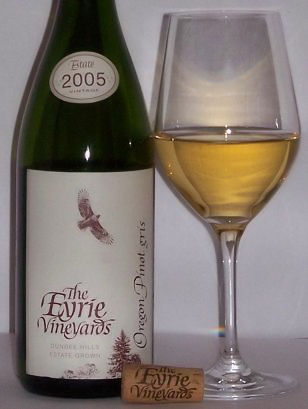
Wine has been produced in the United States since the 1500s, with the first widespread production beginning in New Mexico in 1628. Today, wine production is undertaken in all fifty states, with California producing 84 percent of all US wine. The North American continent is home to several native species of grape, including Vitis labrusca, Vitis riparia, Vitis rotundifolia, and Vitis vulpina, but the wine-making industry is based almost entirely on the cultivation of the European Vitis vinifera, which was introduced by European settlers. With more than 1,100,000 acres (4,500 km2) under vine, the United States is the fourth-largest wine producing country in the world, after Italy, Spain, and France.
Heidi Peterson Barrett is an Amercan winemaker and entrepreneur who has been responsible for some of California's most notable cult wines. Her career has included stints at Screaming Eagle, Dalla Valle Vineyards, Paradigm Winery, Grace Family Vineyards, Amuse Bouche, Lamborn Family, Showket Vineyards, Revana Family Vineyards, Vineyard 29 and Fantesca. Barrett is a consultant for Elizabeth Spencer and has her own wine label, La Sirena.
Arthur Fonjallaz was a Swiss military figure, publisher and fascist.
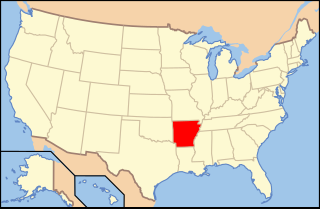
Arkansas wine refers to wine made from grapes grown in the U.S. state of Arkansas. Many of these wines are grown from traditional European wine grapes of the Vitis vinifera group such as Cabernet Sauvignon, Chardonnay, Pinot noir, and Riesling but Arkansas also makes wine from its native grapes, the Cynthiana and Muscadine.
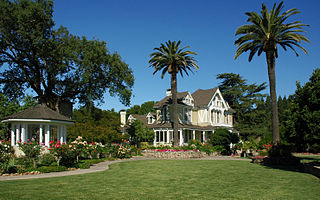
Sutter Home Winery is one of the largest family-run independent wineries in the United States, and is the estate known for the creation of White Zinfandel. It is located in St. Helena, California and owned by Trinchero Family Estates.
Domaine de Bargylus is a wine estate on the slopes of the Coastal Mountain Range in Syria. These mountains, known as Mount Bargylus in the Hellenistic and Roman periods, produced notable wines up until the rise of Islam. Domaine de Bargylus is managed by two brothers Karim and Sandro Saadé, with the assistance of renowned consultant Stéphane Derenoncourt. It has been cited by wine critic Jancis Robinson as "arguably the finest wine of the Eastern Mediterranean".

Mission Hill Family Estate is a wine grower and producer based in West Kelowna, British Columbia, Canada, in the Okanagan Valley wine region. The winery is situated atop Mission Hill overlooking a 145 kilometre lake, mountains and vineyards.

Irish wine production takes place in a small number of vineyards and wine producers the majority of which lie in County Cork, Ireland, with Lusk, North County Dublin, also producing a wine named 'Lusca'. Ireland is officially listed as a wine producing country by the European Commission. Ballydrehid House Estate, Blackwater Valley Vineyard (Mallow), The Watergrasshill Vineyard (Bartlemy), Longueville House (Mallow), West Waterford Vineyard and the most southern and longest standing Thomas Walk Vineyard (Kinsale) all produce wine despite being well north of the area where the Vitis vinifera commonly occurs.
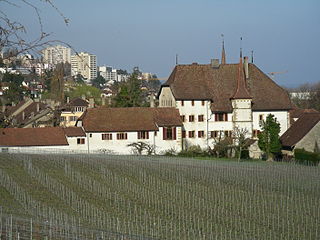
Auvernier Castle Cellars or Caves du Chateau Auvernier is a Swiss winery that cultivates about 40 hectares of grapevines and produce over 10 wine types. Located in Auvernier Castle, the winery is one of the oldest in Switzerland and is a family business from its foundation in 1603. The local Chardonnay grape is used for production of the white wine. The main source for the red wine production is the pinot noir grape type.
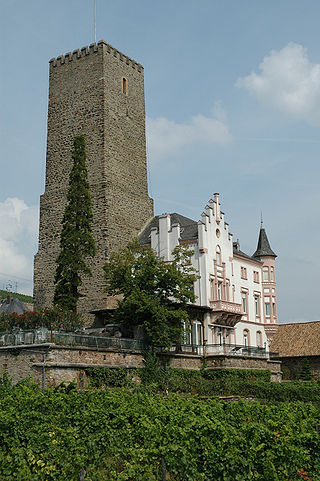
The Boosenburg is a lowland castle in Rüdesheim am Rhein, Rheingau-Taunus-Kreis, Hesse, Germany, located in the Rhine valley and dating back to the 12th century. It is locally known as Oberburg in relation to the near and slightly lower Brömserburg. It has been part of the Rhine Gorge World Heritage Site from 2002.
Johann Andreas Wiederkehr was a Swiss-American winemaker, leather worker, and farmer. After immigrating to the United States in 1880, he opened a vineyard and winery in the Arkansas River Valley. He continued to make wine during Prohibition in the United States, having been granted special permission by the Catholic Church. He was the founder of Wiederkehr Village, Arkansas. His winery was added to the National Register of Historic Places.
Donald M. Hess was a Swiss winemaker and art collector.
